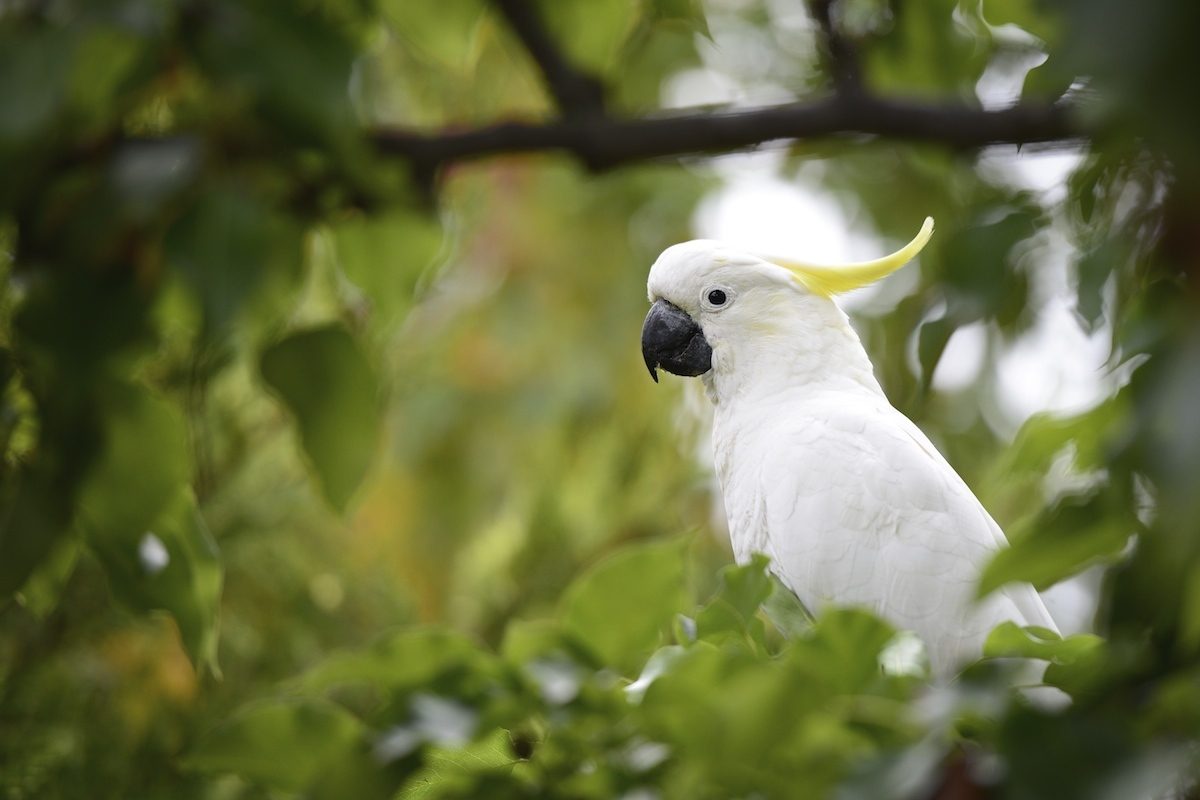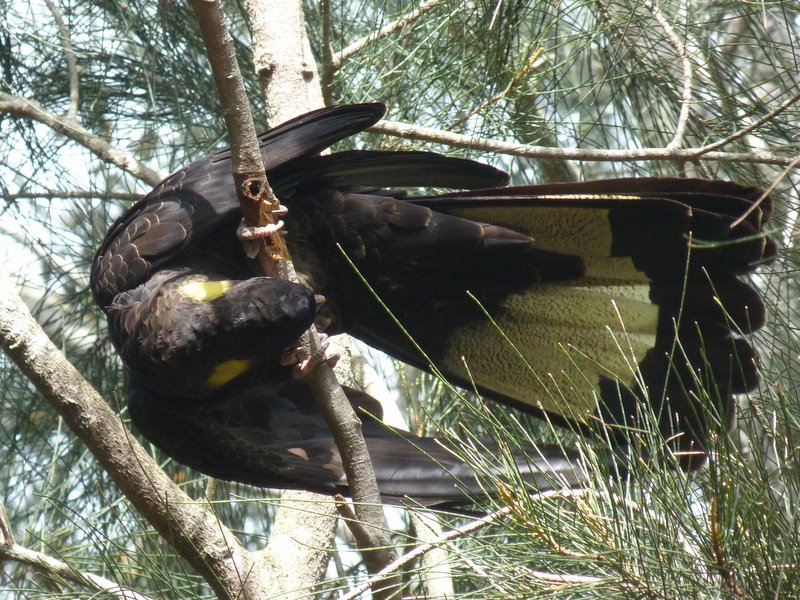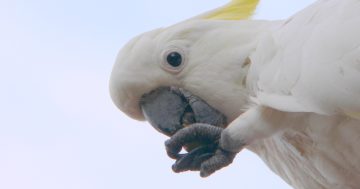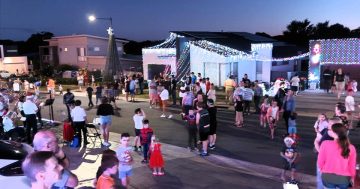
A sulphur-crested cockatoo. Photo: Michelle Kroll.
Ever spotted a street light with the plastic cover hanging limply? Chances are, it didn’t just fall off. It was helped by one of Canberra’s sulphur-crested cockatoos.
Since April 2018, the ACT Government has made 243 repairs to street lights due to suspected or confirmed bird damage, a lot of them ruined by cockatoos and corellas.
“It is possible the actual figure is higher due to damage not clearly associated with birds,” an ACT Government spokesperson said.
“Birds can cause street light faults by chewing or removing wiring, photo-electric cells and unclipping street light covers which lets water into the system causing damage.”
Canberra’s parrots might be beautiful to behold, but there has long been a bone of contention between them and us. And not just because of their ear-piercing screech.
In his memoirs, pioneer Samuel Shumack (1850-1940) recalled one single day in the 1880s when he got busy with his blunderbuss and dispatched more than 500 of them for attacking his orchard. For all the good it did.
“They came on in greater numbers than before,” he wrote, ruefully.

A Yellow-tailed Black-Cockatoo ripping into a sapling to extract grubs. Photo: Ian Fraser.
“The same thing took place at Duntroon. Mr Campbell shot more than 80 before breakfast, and he declared that when he went out at 10 am, 20 in addition to every one shot had come to the funeral of their mates.
“He discontinued shooting and employed men to cover the trees with wire netting and thus saved the late cherry and apricot crops.”
The gang-gang cockatoo has gone on to become the bird emblem for the ACT, while flocks of sulphur-crested cockatoos are our version of snow in winter, white-washing the ground throughout the city.
Canberra naturalist Ian Fraser says it’s quite normal to see flocks upon flocks by the roads between March and August.
“They breed in the paddock trees around Canberra in summer and come into town in winter for the food supply,” he says.
“This can be underground tubers, mostly of weeds, or acorns, especially of pin oaks. Also fruit and flowers, although not quite so much in winter.”
As for their destructive streak, Ian puts it down to a few things, starting with boredom.
“You’ve got to do something while your lunch is digesting, don’t you?” he says.
“They can collect food in their crop faster than they can ingest it, which they do later, safely off the ground. They’re too intelligent just to loaf about doing nothing.”
Second, they’re used to ripping off bark from trees to see what edibles are hiding beneath it, and Ian suspects pulling the rubber strips off lights is an extension of that behaviour.
“Besides, it’s fun to swing on the dangling plastic cover,” he says.
Much like a fingernail, a cockatoo’s beak also grows perpetually, and needs to be kept in check by gnawing.
But are there ways of keeping cockatoos off your lights, window seals, washing, or fruit trees?
“Apparently not,” the naturalist says.
Just part and parcel of living in the Bush Capital it seems.
Original Article published by James Coleman on Riotact.






